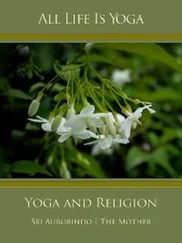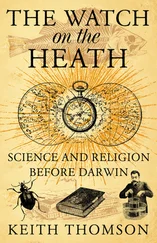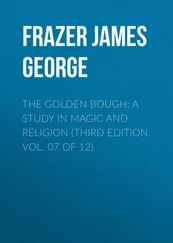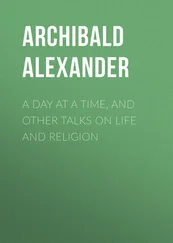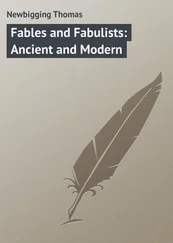Vikernes, Varg - Varg Vikernes - Sorcery and Religion in Ancient Scandinavia
Здесь есть возможность читать онлайн «Vikernes, Varg - Varg Vikernes - Sorcery and Religion in Ancient Scandinavia» весь текст электронной книги совершенно бесплатно (целиком полную версию без сокращений). В некоторых случаях можно слушать аудио, скачать через торрент в формате fb2 и присутствует краткое содержание. Жанр: Старинная литература, на английском языке. Описание произведения, (предисловие) а так же отзывы посетителей доступны на портале библиотеки ЛибКат.
- Название:Varg Vikernes - Sorcery and Religion in Ancient Scandinavia
- Автор:
- Жанр:
- Год:неизвестен
- ISBN:нет данных
- Рейтинг книги:3 / 5. Голосов: 1
-
Избранное:Добавить в избранное
- Отзывы:
-
Ваша оценка:
- 60
- 1
- 2
- 3
- 4
- 5
Varg Vikernes - Sorcery and Religion in Ancient Scandinavia: краткое содержание, описание и аннотация
Предлагаем к чтению аннотацию, описание, краткое содержание или предисловие (зависит от того, что написал сам автор книги «Varg Vikernes - Sorcery and Religion in Ancient Scandinavia»). Если вы не нашли необходимую информацию о книге — напишите в комментариях, мы постараемся отыскать её.
Varg Vikernes - Sorcery and Religion in Ancient Scandinavia — читать онлайн бесплатно полную книгу (весь текст) целиком
Ниже представлен текст книги, разбитый по страницам. Система сохранения места последней прочитанной страницы, позволяет с удобством читать онлайн бесплатно книгу «Varg Vikernes - Sorcery and Religion in Ancient Scandinavia», без необходимости каждый раз заново искать на чём Вы остановились. Поставьте закладку, и сможете в любой момент перейти на страницу, на которой закончили чтение.
Интервал:
Закладка:
20
From there came three maidens,
very wise
from the sea
which is under the tree;
one was named honour/past,
another the coming/present,
cut in pieces of wood,
guilt/future the third;
they were not satisfied
with the fluid life in the well,
they declare the fate of the children
of the age.
This verse is linked to Laguz and Njörðr. All the sorceresses, the wise women, gathered at the burial mound, the well of honour (where the sea/river of forgetfulness is located) to compete for the queen title. They tested their skills to find the one who best mastered the art of sorcery. The old queen, the coming queen and all the others too.
21
She remembers sacred folks
first (best) in the world,
they the golden horse
pierced with a spear
in the hall of the tall (i. e. Óðinn)
they burned her;
three times they burned her,
three times, she was born,
often, and not infrequently,
but she still lives.
This verse is linked to Inguz and Freyr. The sorceress remembered, i. e. she knew, how the king and queen grew corn and made the fields (the golden horse) fertile. This she needed to know if she wanted to become queen. The queen had pierced a sacred bough, a wand, into the field, into the realm of death (Óðinn's hall), and planted seeds there, to make it fertile. The golden horse was the field and its corn, which had been burned repeatedly, since they at that time used the “slash and burn” technique. This golden horse came back from the Earth (was born) over and over again.
22
Fair/light was her name
wherever she went,
a chosen woman good at predictions,
she performed sorcery,
she knew the customs
she played with the customs
and was always well regarded
amongst ill women.
This verse is linked to Dagaz and Baldr and Íðunn. The sorceress who won the bride race, the beauty contest, was naturally light/fair, a term which in antiquity was synonymous with beautiful. She was skilled at sorcery (medicine) and naturally popular with the sick individuals she visited and healed. She knew the customs and mastered them better than everyone else. That's why she was chosen to be their queen-sorcerer in the first place.
23
Then all the powers went
to the seats of the end (i. e. the grave)
the sacred gods,
and agreed;
either the spirits would
suffer losses
or were all the gods to
own party/feast (strive).
This verse is linked to Oþala and Ásgarðr. The gods went to the mound and hoped that they had chosen the right queen, and had found the right king. It would be a good year if they had, or a bad one if they hadn't.
4.5 Freyr's second Group of eight
24
Óðinn launched
his spear into the crowd,
of sacred individuals
the best/winners of the world;
the wooden wall was broken,
the yard of the spirits,
the beautiful predicted the outcome of the battle,
they stood ready on the battlefield.
This verse is linked to Fehu and Auðhumbla. On New Year's Eve the sorcerers were symbolically hanged in the ash trees, wounded by spearheads. Heimdallr blew the horn so that the mound was opened up (i. e. the gate in the picket fence surrounding the burial mound was opened) and was ready to accept the “gods”. The beautiful sorceresses knew what was about to happen and prepared for the inevitable Ragnarök.
This is the 24 thverse, but it is actually an elaboration of the 1 stverse. A verse might contain only some information, so it was necessary to create additional verses to include all the information needed in the song, and since the verses were related to the runes, which came in a certain order, it was necessary to begin anew when the rune-row was completed once. After Oþala the Fehu rune came again, and so one could continue indefinitely.
25
Then all the powers went
to the seats of the end (i. e. the grave)
the sacred gods,
and agreed;
who had in the air
mixed dishonesty
or to one of giant stock
given Óðinn's maiden.
This verse is connected to Uruz and Þursaz , Ymir and Bölþorn. Baldr had been killed by the mistletoe, at the Autumn Equinox, and his wife Nanna, alias Íðunn, had been abducted to the underworld by the giant Þjazi. They now had to be recovered, and therefore the gods travelled into the burial mound.
26
Thunder accuses,
swelling of strength and courage,
he seldom sits still,
when he experiences treachery like this;
when oaths are broken,
words and promises,
all strong amongst men
are broken.
This verse is connected to Þursaz and Bölþorn. The mistletoe, the bad branch, originally a good force, had failed the oak tree and killed Baldr and his wife. The thunderclouds bore witness to what the gods/spirits thought about this.
27
She knows that the worldtree's
sound (Gjallarhorn) is pawned
it is common
under the sacred tree;
she sees a river poured,
a waterfall leading to coarse mud
from the pawn of the father of the chosen.
Do you still know enough or what?
This verse is connected to Ansuz and Óðinn. The bronze lures were "pawned" under the sacred tree, meaning they were dug down to the next New Year's Day, when they again where to be used to open up the road to Hel. The pawn of the father of the chosen was either Baldr himself (Óðinn's eye) or the valuables the dead were buried with, when they were placed in the burial mounds. The gods entered the mound to get hold of them “again” (believing they were the reborn dead themselves). The valuables were not gone for all time, because it could be recovered, so it was only a “pawn”. "Do you still know enough or what?" suggests that the goddess of the mound, teaching the visiting god these verses, wondered if he knew enough or needed to hear more. Maybe it was about time the listener understood what the song was about. "Do you still not know what I'm talking about?" She wants him to give her the key words, to prove his knowledge.
28
She sat alone outside,
when the old came,
the frightening young god,
and looked her in the eyes.
What do you ask me,
why tempt you me?
Everything I know, Óðinn,
about how you lost your eye,
in the well of reminiscence;
the one who reminiscent drinks mead
every morning
from the pawn of the father of the fallen/chosen.
Do you still know enough or what?
This verse is linked to Ansuz and Raiþo , Óðinn and Þórr. The gods, the young men dressed up like Óðinn, were in fact “the old god” and young at the same time. So the old god who came to visit Hel was in reality a young god, and he was scary because he looked like he really belonged in the grave; wearing a mask, being naked or wearing a white dress and with bleeding wounds, the body painted with ash and often with a gallows' rope hanging around his neck. The god tempted Hel, slept with her to get a son (and he might originally have whipped her with a green branch to make her fertile), and was so himself born as the son when he left the burial mound; from Hel's womb. Óðinn's lost eye was the Sun/Baldr, which/who he temporarily lost at the Autumn Equinox, when Baldr was killed and sent to the underworld. Hel, who had Baldr in her company, knew all about this, of course; about how the Sun had gone down in the sea and lost its power.
29
The army's father chose for her
rings and pendants,
owned wise speech
and animated objects (the mistletoe)
to make predictions with,
she looked into every world.
Читать дальшеИнтервал:
Закладка:
Похожие книги на «Varg Vikernes - Sorcery and Religion in Ancient Scandinavia»
Представляем Вашему вниманию похожие книги на «Varg Vikernes - Sorcery and Religion in Ancient Scandinavia» списком для выбора. Мы отобрали схожую по названию и смыслу литературу в надежде предоставить читателям больше вариантов отыскать новые, интересные, ещё непрочитанные произведения.
Обсуждение, отзывы о книге «Varg Vikernes - Sorcery and Religion in Ancient Scandinavia» и просто собственные мнения читателей. Оставьте ваши комментарии, напишите, что Вы думаете о произведении, его смысле или главных героях. Укажите что конкретно понравилось, а что нет, и почему Вы так считаете.

